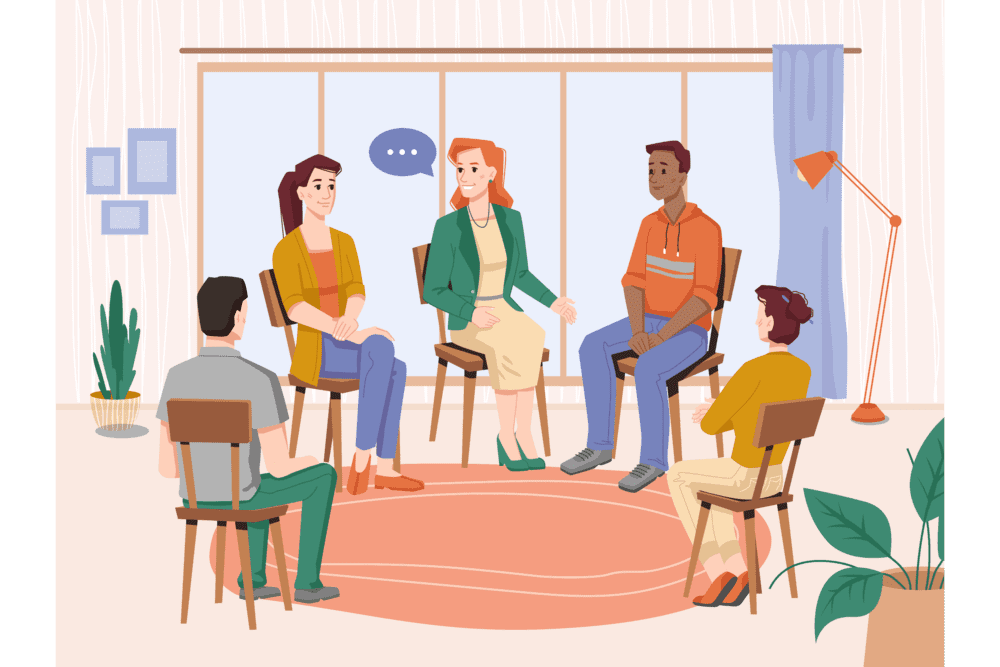Group therapy has emerged as a powerful and effective approach to address a variety of emotional and psychological challenges. Unlike traditional one-on-one counseling, group therapy brings individuals together to share their experiences. These experiences also includes struggles, and triumphs in a supportive and empathetic environment.
What is Group Therapy?
Group therapy is a therapeutic approach where a trained mental health professional facilitates a group discussion among individuals facing similar issues or concerns. These groups can vary in size, typically ranging from 6 to 12 participants. It can cover a wide array of topics such as anxiety, depression, addiction, grief, and interpersonal difficulties.
Key Components
- Supportive Environment: Group therapy creates a safe and confidential space where individuals can openly express their thoughts and feelings. The sense of belonging to a community that understands and empathizes with one another can be a powerful motivator for healing.
- Mutual Understanding: Participants in therapy often share similar struggles, allowing for a profound sense of mutual understanding. This shared experience helps break down feelings of isolation, fostering connection and empathy among group members.
- Feedback and Perspective: Group therapy provides a unique opportunity for individuals to receive feedback from their peers. Different perspectives can shed light on alternative ways of thinking and coping, promoting personal insight and growth.
- Skill Development: Therapists often incorporate various therapeutic techniques and exercises into group sessions to help participants develop essential coping skills. These skills can include effective communication, stress management, and problem-solving strategies.

Why Group Therapy is Useful:
- Diversity of Perspectives: Group therapy exposes individuals to a diverse range of perspectives and coping strategies. This diversity can be especially beneficial as it encourages participants to consider alternative viewpoints and approaches to their challenges.
- Reduced Isolation: Many individuals struggling with mental health issues experience a sense of isolation. It combats this isolation by fostering a sense of community and shared experience, reminding participants that they are not alone in their struggles.
- Increased Accountability: The group setting creates a sense of accountability, motivating individuals to actively engage in their own healing process. The support and encouragement from peers can be a powerful catalyst for positive change.
- Cost-Effective: Group therapy is often more cost-effective than individual therapy, making mental health support more accessible to a broader range of individuals.
How Group Therapy Works:
- Introduction and Orientation: Group therapy typically begins with an introduction and orientation session, where participants learn about the structure, guidelines, and confidentiality of the group.
- Sharing and Processing: Group members take turns sharing their thoughts, feelings, and experiences. The therapist facilitates discussions and encourages members to explore their emotions in a supportive and non-judgmental atmosphere.
- Therapeutic Techniques: Therapists may employ various therapeutic techniques, including role-playing, cognitive-behavioral exercises, and mindfulness practices, tailored to address the specific needs of the group.
- Closure and Reflection: Sessions often end with a reflection on the topics discussed, progress made, and goals for the future. Closure provides a sense of accomplishment and reinforces the therapeutic journey.
Conclusion:
Group therapy stands as a testament to the transformative power of shared experiences and collective healing. By fostering a sense of community, promoting mutual understanding, and providing diverse perspectives, it has proven to be a valuable and effective tool in the realm of mental health. As individuals come together to support one another, they build not only stronger foundations for their own well-being but also contribute to the broader tapestry of collective resilience and growth.
Ready to begin? Start your online therapy journey today. Book your first session now.




